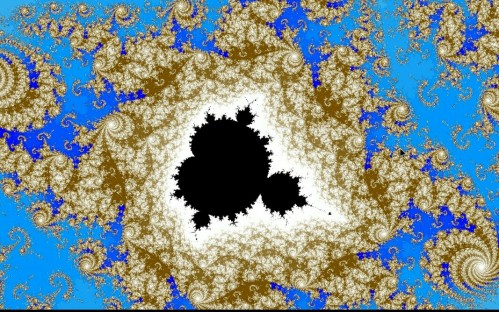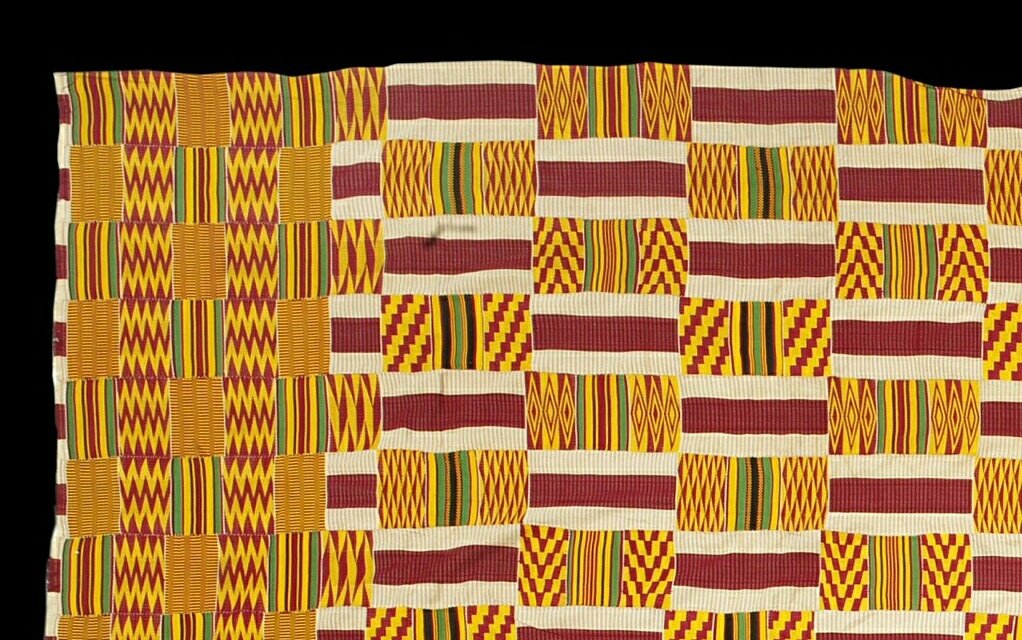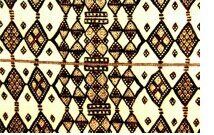Picture 1 : Kente Fabric from Ghana
What do the kente (traditional fabric from Ghana) and algorithms have in common?
As odd as it may seem, mathematics have had a major importance in African societies. Weaving techniques were not invented out of the blue by some weaver who was chewing kola nuts out of boredom. They were actually the result of an analytic process to bring out mathematical values into the fabric. Mathematics, indeed. You will never look at sarongs in the same way again.
What is an iteration?
Here we have a weaver from Ghana. His job is to make a special fabric for a self-centered high dignitary. He is going to achieve his goal in a rather surprising way. According to mathematician Ron Eglash, the theory of fractals developed in Europe by Mandelbrot, consists in repeating a pattern on different scales and on the same surface in a specific order. It can be as simple as a square shape inside another square or as complex as shown in the picture below.
 Picture 2 : Mandelbrot Set
Picture 2 : Mandelbrot Set
Infinite scales
Scales are used to represent a pattern in different sizes and create an ensemble of patterns. In some African countries, scales are used by a lot of people in an almost spiritual way. Here is another weaver living in Senegal. He is in charge of the wedding ceremony of a Fulani couple. His strong belief in love will inspire him to create a pattern based on ideas of continuity and eternity. On the ceremonial fabric, he will make series of four diamond shaped embroideries of different sizes. Each one of them will be proportionally bigger than the previous one. He will repeat the same pattern on the other side of the fabric. This is what he calls the cycle of fertility and eternal happiness and what we call the symmetrical scales.
It would be impossible to study all the geometrical patterns used in Africa in the fields of architecture, games, sculpture or even music. Ron Eglash and other researchers have contributed to this massive undertaking. However, it is a pity that some of them still call it « indigenous mathematics ». Mathematics, as we know it, is not the only way to perceive the world. Other societies have developed their own rational thinking. The only way to understand it to be aware of our own approach. In other words, if only Samba Diallo had known that the construction of his village was based on the fractal theory and the millet borders were built following the affine map model, he might have felt a little less like a stranger in Paris.
Touhfat Mouhtare
(Translated by : Bushra Kadir)
Sources :
Ron Eglash, African Fractals, Rutgers University Press, 1999.
For more information about fractals : http://en.wikipedia.org/wiki/Fractal
Pictures :
Kente Image : www.diamonds-wood.blogspot.com
Mandelbrot Image: wikipedia
Fulani Image : Ron Eglash, African Fractals


